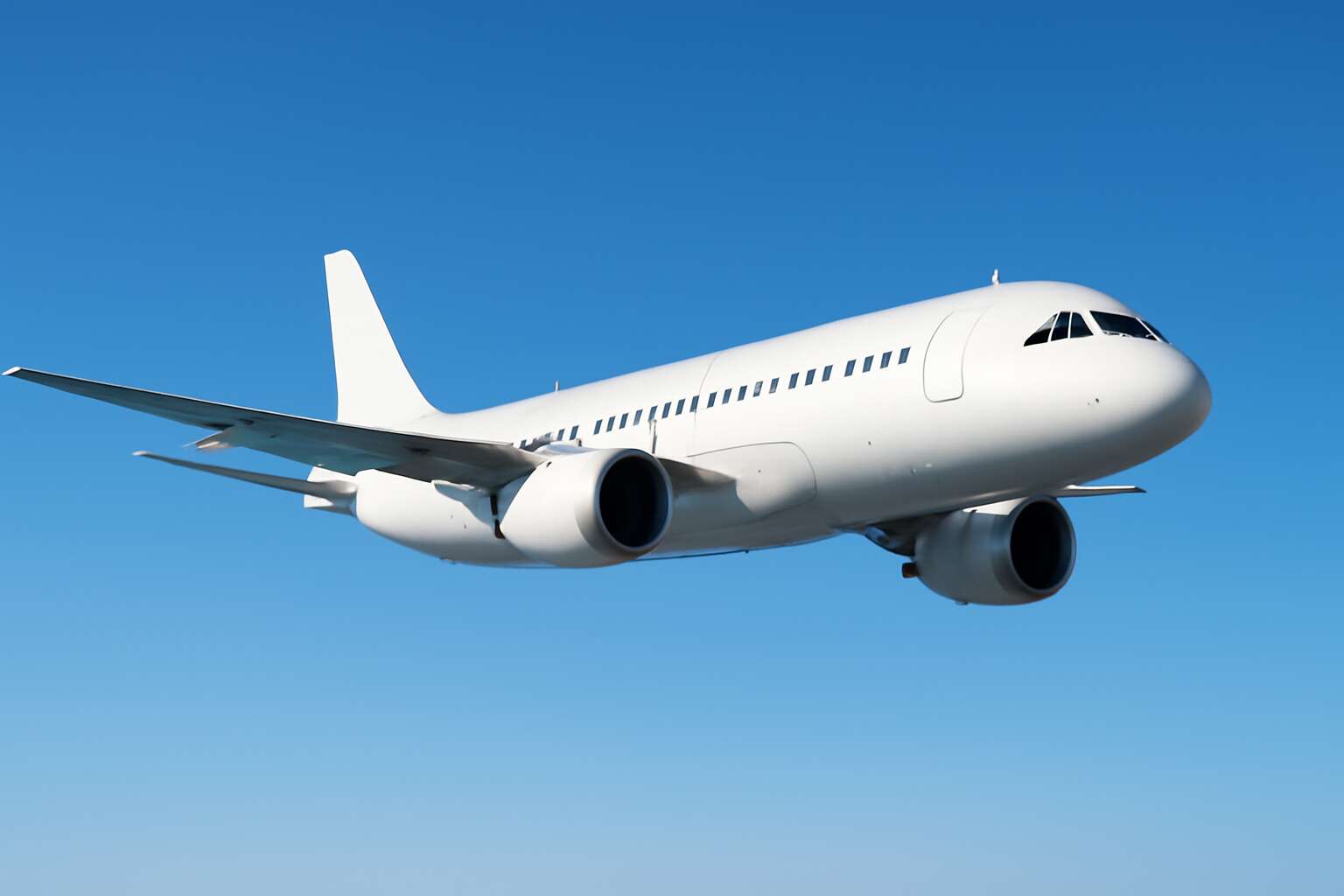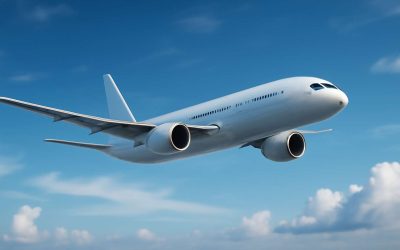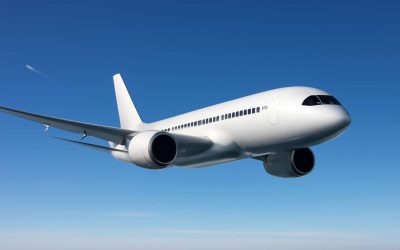The Practical Reasons Behind the Color Choice for Aeroplanes
Thermal Regulation and Heat Reflection
The choice of color for an aeroplane might seem purely aesthetic at first glance, but beneath that pristine white exterior lies a strategic decision rooted in practicality. One compelling reason why aeroplanes are white is their superior thermal regulation. White surfaces reflect a significant portion of solar radiation, helping to keep the aircraft cooler during long flights under the relentless South African sun. This natural heat reflection reduces the need for extensive air conditioning, conserving fuel and enhancing overall efficiency.
Furthermore, the high visibility of white enhances safety and maintenance. Cracks, corrosion, and debris are more easily detected on a white surface, enabling quicker inspections and repairs. This, in turn, prolongs the lifespan of the aircraft. The simplicity of white paint also minimizes the need for frequent repainting, ensuring the aircraft remains in optimal condition without constant upkeep. Ultimately, the decision why aeroplanes are white isn’t just about aesthetics—it’s a calculated choice that balances thermal management, safety, and longevity, ensuring these flying marvels operate at their peak.
Ease of Maintenance and Stain Detection
The choice of the pristine white exterior for aeroplanes isn’t just a matter of tradition or aesthetics. It plays a critical role in simplifying maintenance and enhancing safety. White surfaces make it easier for maintenance crews to spot stains, cracks, or corrosion at a glance. This immediate visibility allows for quicker inspections, reducing downtime and preventing minor issues from escalating into major repairs. The process of keeping an aircraft in top condition is meticulous, and the color white acts as an early warning system, alerting technicians to trouble spots that might otherwise go unnoticed.
Additionally, the practical benefits extend to cleanliness. White paint shows dirt and grime clearly, prompting timely washes that preserve the aircraft’s integrity. For airlines operating in diverse environments—such as South Africa’s varied climate—this becomes especially valuable. It ensures the aircraft remains in optimal condition, ready for the next flight. To streamline maintenance even further, many operators favor white because it minimizes the need for frequent repainting, saving both time and money in the long run.
Lightweight Paints and Material Compatibility
Ever wondered why aeroplanes are white? Beyond the obvious aesthetic appeal, the choice of lightweight paints and material compatibility plays a crucial role in aviation logistics. White paint is inherently lighter, significantly reducing the aircraft’s weight—an essential factor in fuel efficiency and overall performance. When every kilogram counts, opting for a paint that adds minimal mass is not just clever; it’s downright necessary.
Moreover, white coatings are highly compatible with the advanced materials used in modern aircraft construction, such as composites and aluminum alloys. These materials respond better to white paints, which typically contain fewer harsh chemicals that could compromise structural integrity over time. This harmonious relationship between paint and material extends the longevity of the aircraft’s exterior, saving airlines from costly repainting sessions. So, the next time you marvel at a pristine white plane soaring across the South African sky, remember: the color isn’t just about looks—it’s a meticulously calculated choice rooted in practicality and engineering finesse.
Aesthetic and Branding Considerations
Visibility and Safety at High Altitudes
In the shadowed skies where giants silently glide, the choice of white for aeroplane exteriors reveals a purpose more profound than mere aesthetics. The pristine hue serves as a canvas of invisibility, allowing aircraft to blend seamlessly into the vast, often haunting expanse of the atmosphere. This color choice is no accident; it is a calculated decision rooted in visibility and safety at high altitudes. When storms brew or clouds gather, the stark whiteness offers unparalleled contrast, ensuring that pilots and ground crews can easily distinguish these metallic phantoms amidst the swirling chaos.
Moreover, the ghostly white surface acts as a silent sentinel, enhancing the aircraft’s aesthetic appeal and reinforcing its brand identity. The uniform color facilitates branding consistency across fleets, a crucial element in the world of aviation where reputation is everything. The simplicity of the hue also ensures that maintenance crews can swiftly identify any anomalies or damage, reducing downtime and safeguarding lives. In the end, the question of why aeroplanes are white is intertwined with a tapestry of safety, visibility, and visual harmony—an enduring testament to the meticulous artistry behind flying machines.
Corporate Branding Opportunities
In the grand tapestry of aviation design, the choice of white for aeroplane exteriors is nothing short of poetic. It transforms these flying behemoths into pristine canvases—an elegant stage for branding that captures the imagination. The color white embodies purity, sophistication, and a sense of trust, making it the perfect backdrop for airline identities to shine brightly against the vast, azure sky. When passengers gaze upward, the gleaming white aircraft become symbols of reliability and excellence, elevating the airline’s prestige in a crowded skiescape.
Beyond mere aesthetics, the strategic use of white opens up a realm of branding opportunities. Airlines often incorporate their logos, slogans, and unique color accents onto the white surface, creating a cohesive visual identity that’s instantly recognizable. This consistency across fleets not only builds brand loyalty but also evokes a sense of familiarity and comfort for travelers. In essence, understanding why aeroplanes are white reveals a potent blend of visual harmony and marketing mastery, ensuring that every flight is a floating emblem of the airline’s story.
Neutral Appearance for Global Markets
In the vast, interconnected world of aviation, a seemingly simple choice—why aeroplanes are white—carries profound aesthetic and branding implications. A neutral, unobtrusive appearance allows aircraft to blend seamlessly into the global market, appealing to diverse cultures and regions without cultural missteps. The color white acts as an international visual language, fostering a sense of trust and reliability that transcends borders. For airlines aiming to project consistency and professionalism, this color choice creates an elegant canvas for branding that can be tailored effortlessly with logos and accents.
Moreover, the neutral appearance of white aircraft ensures that they do not clash with local environments or cultural nuances, making them a versatile choice for airlines operating across continents. This universal appeal simplifies maintenance and reduces the risk of unintended cultural misinterpretations, reinforcing the importance of understanding why aeroplanes are white. The choice sustains a balance of aesthetic appeal and practical functionality, elevating the airline’s image in the eyes of global travelers. It’s a subtle yet powerful testament to the artistry behind aircraft design and branding mastery.
Historical Evolution of Airplane Color Schemes
Early Aircraft Colors and Materials
In the dawn of aviation’s storied past, aircraft donned a kaleidoscope of colors, each hue reflecting the technological and aesthetic aspirations of their era. Early aircraft colors were often vibrant, painted in bold reds, deep blues, and military greens—designed more for visibility and durability than for the sleekness we now associate with modern aviation. Materials like linen, silk, and early aluminum alloys dictated these choices, their textures and properties influencing the palette of the sky-bound vessels.
As the aviation industry soared onward, the quest for efficiency and safety ushered in a new era of streamlined, uniform appearances. The evolution of airplane color schemes was driven by a desire to reduce maintenance costs and improve visibility. During World War I and II, military aircraft often sported camouflage or stark, high-contrast patterns. However, as commercial aviation matured, the focus shifted toward a more standardized, practical approach. This transformation laid the groundwork for the dominance of white—an iconic hue that symbolizes clarity and purity in the skies.
Transition to White Paint in Commercial Aviation
In the tapestry of aviation’s evolution, the shift to white paint on airplanes marks a pivotal chapter—a symphony of practicality, safety, and elegance blending seamlessly in the vast sky. The transition from vibrant hues and camouflage to a uniform, pristine white was no mere aesthetic choice; it was a strategic revolution driven by a desire for efficiency and clarity. As aircraft grew more sophisticated, so did the need for a color scheme that could serve multiple purposes without compromise.
Throughout history, the allure of white in aviation has been rooted in its ability to reflect heat, facilitate maintenance, and project a neutral, professional image across global markets. The adoption of white paint became a symbol of purity and precision, echoing the aspirations of an industry reaching for the heavens. This luminous hue not only enhances safety but also embodies the timeless elegance of modern aeronautics, making it the quintessential color for the aircraft that connect continents and cultures.
Modern Innovations and Future Trends
The evolution of airplane color schemes is a fascinating reflection of technological progress and industry priorities. Historically, early aircraft were painted in a medley of vibrant hues—reds, blues, and even camouflage—to serve military and aesthetic purposes. However, as commercial aviation expanded, the focus shifted toward a more pragmatic approach. White paint became the default choice, driven by its practicality and the industry’s desire for a uniform, professional appearance. This transition was not merely about aesthetics but was rooted in the functional benefits that white offers, such as ease of maintenance and heat reflection.
Modern innovations have further cemented the dominance of white in aviation. Advances in paint technology now include lighter, more durable coatings that improve aerodynamics and reduce weight. Additionally, the rise of branding opportunities has led airlines to incorporate logo decals and color accents over the white canvas, making their aircraft stand out without sacrificing the benefits of the classic white exterior. As the industry looks ahead, trends suggest an increasing focus on environmentally friendly paints and coatings, but the core reason why aeroplanes are white remains unchanged—they embody efficiency, safety, and elegance in the vast sky.
Environmental and Economic Factors
Cost-Effectiveness of White Paint
Choosing white paint for aeroplanes is not merely a matter of tradition; it is a strategic decision rooted in environmental and economic wisdom. The durability of white paint reduces the frequency of repainting, which in turn minimizes waste and lowers environmental impact. This longevity means fewer resources are used over the lifespan of an aircraft, aligning with sustainable aviation goals.
From an economic perspective, the cost-effectiveness of white paint becomes apparent when considering maintenance and operational expenses. White surfaces are easier to inspect, allowing for swift detection of cracks, corrosion, or damage—crucial for maintaining safety and reducing downtime. Additionally, the widespread use of white paint creates a competitive market that drives down prices, making it an economically savvy choice for airlines seeking efficiency.
Some industry insiders point out that the simplicity of white as a neutral color also streamlines the manufacturing process. For example, the application of white paint involves fewer layers and less complex mixing, saving time and resources. As a result, airlines benefit from a seamless balance of environmental responsibility and cost savings, which is why aeroplanes are white in the first place!
Environmental Impact of Aircraft Coatings
The environmental footprint of aircraft coatings is a subtle yet compelling factor in understanding why aeroplanes are white. White paint’s reflective qualities help reduce heat absorption, thereby decreasing the energy required for cabin cooling and engine efficiency. This not only cuts operational costs but also aligns with eco-conscious aviation practices. Moreover, the durability of white paint means fewer repainting cycles, which significantly diminishes the waste generated from discarded coatings and chemical runoff—an often overlooked environmental boon.
From an economic standpoint, the choice of white paint is equally strategic. Its widespread use fosters a competitive market, driving down prices and simplifying maintenance routines. The ease of inspecting white surfaces for corrosion or cracks accelerates safety checks, reducing aircraft downtime. This synergy of environmental responsibility and economic efficiency explains why aeroplanes are white, reflecting both an aesthetic convention and a pragmatic decision rooted in sustainability and fiscal prudence.
Longevity and Durability of White Paint
Longevity and durability are key reasons why aeroplanes are white. White paint is inherently resilient, standing up well to harsh environmental conditions at high altitudes. Its ability to resist UV radiation and weathering extends the lifespan of aircraft coatings, reducing the frequency of repainting. This longevity translates into fewer maintenance cycles and lower operational costs, making white the practical choice for airlines.
Additionally, white coatings are easier to repair and touch up, ensuring that aircraft remain in optimal condition for longer periods. For fleet operators, this durability means less downtime and more efficient use of aircraft. The consistent appearance of white aircraft also simplifies inspection routines, as cracks or corrosion spots are more visible—further extending the aircraft’s service life.
In essence, the durable nature of white paint directly supports the economic and environmental benefits of why aeroplanes are white. It’s a decision rooted in practicality, ensuring aircraft are safe, cost-effective, and environmentally conscious over time.
Technical and Engineering Perspectives
Advancements in Aircraft Coatings
From a technical and engineering perspective, the choice of white for aircraft coatings is a marvel of innovation. Advances in aircraft coatings have transformed how airplanes withstand the rigors of high-altitude environments, ensuring longevity and performance. Modern aerospace engineers prioritize the development of lightweight, durable paints that can cope with extreme weather conditions while maintaining optimal heat reflection. This pursuit of perfection has led to the refinement of white paints, which offer unmatched advantages in terms of material compatibility and corrosion resistance. The reason why aeroplanes are white is not only rooted in tradition but also in cutting-edge science that optimizes aircraft lifespan and safety.
Furthermore, contemporary advancements include the use of environmentally friendly coatings that reduce the impact of aviation on our planet. Incorporating eco-conscious materials ensures that aircraft remain resilient against the corrosive effects of moisture and pollutants, while also aligning with global sustainability goals. An essential aspect of why aeroplanes are white is the ease of maintenance—white surfaces reveal dirt and damage more clearly, simplifying inspection and repair processes. This seamless integration of engineering innovation and practical design makes white the natural choice for aircraft coatings, offering a perfect blend of efficiency, durability, and environmental responsibility.
Impact of Paint Color on Airframe Performance
When considering why aeroplanes are white, it’s essential to recognize how paint color impacts airframe performance from a technical perspective. White paint, with its high reflectivity, plays a pivotal role in thermal regulation. By bouncing off the sun’s rays, it minimizes heat absorption, reducing the strain on cooling systems and preserving fuel efficiency—an advantage that resonates deeply in commercial aviation.
In terms of engineering, the choice of white extends beyond mere aesthetics. It allows for the application of advanced, lightweight coatings that do not compromise the aircraft’s structural integrity. Additionally, the reflective qualities of white paint help mitigate thermal expansion and contraction, thereby enhancing the longevity of the airframe. Interestingly, this color choice also influences the aircraft’s visibility and safety at high altitudes, making it easier to spot in busy skies or during search and rescue operations.
- Enhanced thermal management
- Reduced maintenance costs
- Improved structural durability
All these factors converge to explain why aeroplanes are white—merging cutting-edge science with practical necessity, ensuring every flight is safer, more efficient, and better equipped to face the rigors of high-altitude environments. It’s a testament to how innovation in aerospace engineering continues to shape the skies, one white plane at a time.
Maintenance and Inspection Efficiency
In the intricate world of aviation engineering, the choice of white paint for aircraft surfaces is more than just a visual preference—it’s a strategic decision that enhances maintenance and inspection efficiency. The reflective properties of white allow maintenance crews to effortlessly spot dirt, corrosion, or structural anomalies during routine inspections, significantly reducing downtime. This visual clarity ensures that issues are addressed swiftly, preventing minor flaws from developing into critical failures.
Furthermore, white paint’s compatibility with advanced, lightweight coatings simplifies the repainting process, which is crucial for maintaining aircraft integrity over years of service. The uniformity of white also provides a standardized backdrop, making it easier to apply non-destructive testing techniques such as infrared thermography—an essential tool for detecting subsurface damages that are invisible to the naked eye.
- Enhanced visibility of surface imperfections
- Streamlined inspection workflows
- Reduced maintenance costs and aircraft downtime
All these factors reveal why aeroplanes are white—transforming a simple color choice into a vital element of aerospace safety and efficiency. It’s a symphony of engineering precision, where every detail, even paint color, plays a pivotal role in ensuring that each flight remains seamless and secure in the vast, ever-changing skies of South Africa and beyond.
FAQs About the Color of Aeroplanes
Are all airplanes white?
Many travelers have gazed up at the sky and wondered why aeroplanes are white. The answer isn’t just about aesthetics; it’s a blend of science, tradition, and practicality. The luminous brilliance of white paint enhances thermal regulation, reflecting the sun’s rays and helping keep aircraft cooler during long flights. This is especially crucial when flying through the intense South African midday sun, where heat management becomes paramount.
Beyond thermal benefits, white paint also simplifies the maintenance process. Stains and dirt are far more visible on a white surface, allowing for quicker inspections and easier cleaning. This visibility ensures that safety standards are consistently met without surprise surprises! Interestingly, the choice of white also stems from historical airline practices, which favored a neutral, non-distracting hue—perfect for corporate branding opportunities and global market appeal. So, next time you marvel at a white aircraft gliding gracefully across the sky, remember it’s a blend of tradition, science, and strategic design—why aeroplanes are white is a story of innovation and practicality.
Can airplanes be painted different colors?
Can airplanes be painted different colors? Absolutely. While the iconic white dominates the skies, aircraft manufacturers and airlines do occasionally opt for vibrant hues, striking patterns, or even custom branding. However, the choice of color isn’t merely about aesthetics—it’s a calculated decision rooted in practicality and long-term performance. The question of why aeroplanes are white is often met with curiosity, especially by those wondering if the skies could ever see a rainbow of aircraft. The truth is, although colorful designs are eye-catching, white remains the preferred color for many compelling reasons.
One of the main reasons why aeroplanes are white is related to maintenance. Bright white surfaces make it easier to spot cracks, corrosion, or oil leaks, which are critical for safety. This visibility simplifies inspection routines, saving time and reducing costs for airlines. Moreover, white paint reflects sunlight effectively, helping to keep aircraft cooler during high-altitude flights or when parked under the African sun, a vital consideration in South African climate conditions. While custom colors are possible, they often require more rigorous upkeep and can obscure early signs of wear or damage.
- Cost efficiency: White paint is typically less expensive and more readily available.
- Durability: White coatings tend to last longer, resisting UV degradation better than some colored paints.
- Environmental impact: White paint usually involves fewer harmful chemicals, aligning with sustainability efforts.
Despite the allure of vibrant, personalized liveries, the practical advantages of white paint—its simplicity, safety benefits, and cost-effectiveness—continue to influence why aeroplanes are white. This color choice remains a testament to the aviation industry’s commitment to innovation, safety, and efficiency in every flight across the globe, especially over the expansive skies of South Africa. The next time you gaze upward and see that gleaming white silhouette slicing through the clouds, remember: it’s a carefully considered decision rooted in science and tradition, not mere aesthetics.
How does color affect airplane safety?
Ever wondered why aeroplanes are white? It’s a question that sparks curiosity for many, especially when considering the technological and safety aspects of aviation. The color of an aircraft isn’t just about looks; it plays a critical role in ensuring safety and efficiency during every flight. For South African airlines and aircraft operators, understanding why aeroplanes are white is essential in appreciating the intricate balance between design, safety, and practicality.
Color impacts airplane safety primarily through visibility and inspection ease. White surfaces make it easier to detect cracks, corrosion, or oil leaks, which are vital for maintaining the integrity of the aircraft. This quick detection capability helps reduce maintenance costs and enhances safety. Additionally, white reflects sunlight better, which is particularly beneficial during long flights or when parked in hot climates like South Africa, helping to keep the aircraft cooler and reducing strain on cooling systems.
- Visibility at high altitudes is improved with a white exterior, making aircraft easier to spot in the sky, especially in adverse weather conditions.
- White paint’s durability means it resists UV degradation longer, which is crucial for aircraft operating in sunny regions.
- Cost efficiency is another factor; white paint is generally cheaper and simpler to maintain over time.
While colorful liveries may offer branding opportunities, the safety and practicality of white paint continue to dominate the aviation industry. Its ability to enhance safety, reduce costs, and withstand harsh environmental conditions explains why aeroplanes are white—plain and simple, yet crucial in the world of flight.




0 Comments